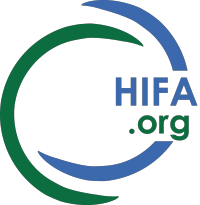Citation, abstract and comment from me below.
CITATION: Association between sick child facility readiness and quality of care at the individual and facility level in five low- and middle-income countries. BMC Health Serv Res. 2024 Nov 14;24(1):1400. doi: 10.1186/s12913-024-11772-9.
https://bmchealthservres.biomedcentral.com/articles/10.1186/s12913-024-1...
ABSTRACT
Background: Raising the quality of health services is key to continued progress in improving child health, however, data on service quality are limited and difficult to interpret. The relationship between facility readiness and the quality of care is complex.
Methods: Using publicly available data sets from five low- and middle-income countries (LMICs), we assessed the relationship between structural factors and the clinical quality of care for managing sick children. We developed indices for readiness and quality accounting for available indicators, expert opinion, and alignment with integrated management of childhood illness (IMCI) guidelines...
Results: The analysis included data from 3,149 health facilities and 11,159 sick child observations. In four of the five countries included in the analysis, we observed for every 10%-point increase in readiness, quality increased by about 1% point after adjusting for facility type and managing authority...
Conclusions: The weak correlation observed suggests readiness plays an important role in quality but as currently measured cannot be used to characterize clinical quality of care. Data for assessing quality of health services are limited, presenting challenges for understanding impediments, assessing interventions, and gauging changes in the quality of care over time. We need better data to assess the quality of care being delivered in LMICs to understand what factors drive quality, with the goal of improving the management of sick children.
COMMENT (NPW): The authors conclude "We need better data to assess the quality of care being delivered in LMICs to understand what factors drive quality". This is an indictment of the global health community: we know so much about medical causes of mortality and morbidity, and relatively little about the factors that contribute to (lack of) quality care. Improving quality of care from home to health facility has the potential to reduce child mortality and morbidity more than any new intervention likely in the coming decade. Very often, it is the basics of diagnosis and management that are at fault. I invite CHIFA members to comment. What are the most important factors that promote quality of care? One approach is to focus on empowerment of healthcare providers. HIFA uses the acronym SEISMIC to describe these needs. https://www.hifa.org/about-hifa/hifa-universal-health-coverage-and-human... One of them is the availability of practical, reliable information in a form that the parent or health worker can understand and that is relevant to their context.
HIFA profile: Neil Pakenham-Walsh is coordinator of HIFA (Healthcare Information For All), a global health community that brings all stakeholders together around the shared goal of universal access to reliable healthcare information. HIFA has 20,000 members in 180 countries, interacting in four languages and representing all parts of the global evidence ecosystem. HIFA is administered by Global Healthcare Information Network, a UK-based nonprofit in official relations with the World Health Organization. Email: neil@hifa.org

